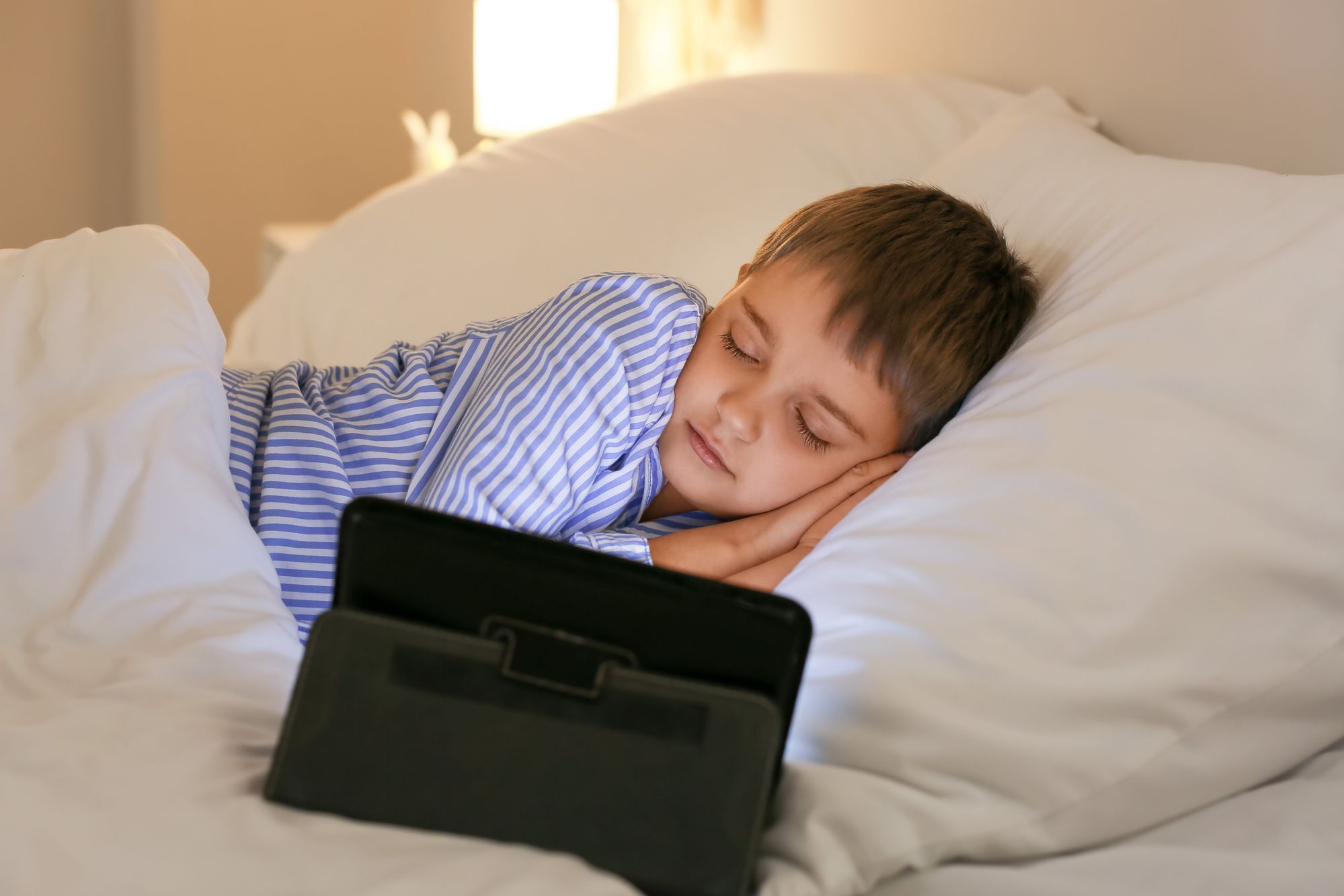It’s a struggle many parents know all too well—your child insists they’ll turn off their device in “just five more minutes,” yet an hour later, they’re still scrolling, gaming, or messaging friends. In a world where screens are everywhere, technology has become a huge part of daily life, but when it starts creeping into bedtime, it can quietly disrupt one of the most important foundations of health: sleep. If your child is constantly tired, moody, struggling at school, or finding it hard to put their device down at night, their screen habits could be affecting their well-being more than they realise. Sleep isn’t just about resting—it’s essential for learning, emotional balance, and overall development. The good news? A few simple changes can help your child build healthier nighttime routines and improve their sleep. Here’s what to watch for and how to make a positive shift.
What are some signs that your child or adolescent isn’t getting enough sleep, perhaps through overusing technology?
● Depressed mood,(5) irritability during offline social interactions
● Hyperactivity at school (6)
● Reluctance/arguing about getting off phones/devices and going to bed (7)
● Reduced academic performance
● Changes to communicating/social interacting at home and/or school
● Falling asleep during the day
● Difficulties waking up for school and sleeping in late on weekends to ‘catch up’ (8)
● Getting to school late or missing school days
How can I encourage safe, healthy technology use to improve my child’s sleep & wellbeing?
- Putting in place some guidelines surrounding technology use at night is advisable and these guidelines might differ depending on the age of your child or adolescent. Children and adolescents need help with regulating their behaviour and understanding the harmful effects of disturbed sleep.
- Ideally, no mobile devices should be allowed in the bedroom. Why?Although it’s sometimes unavoidable to have devices like laptops in the bedroom, the bedroom should ideally be preserved for sleeping only so that it is perceived by the brain as a calm place – this helps children and young people to switch off and feel sleepy. Children and adolescents very commonly report using their phones after initially turning the lights out, even if there are rules in place about device use. Children and adolescents also report going and collecting their mobile devices after parents have gone to bed, even when everyone has agreed to leave them outside of bedrooms. Educating children about the harmful effects of disturbed sleep can be helpful for ensuring rules about device use are adhered to. Given many children and adolescents use their phone’s alarm to wake up in the morning, a simple strategy of replacing phones with an alarm clock may make removing devices from the bedroom more practical.
- Establish a nightly ‘wind down’ routine with your child or adolescent. Why? Having a nightly routine in the lead-up to bedtime can help children and adolescents unwind and cues their brains into knowing that it’s nearly time to sleep. As part of this wind down routine, create a calm environment and replace device usage in the hour before bed with a relaxing routine. This can help to reduce stress and anxiety, making it easier to feel sleepy.
Limit exposure to bright light Why? Children and adolescents body clocks are sensitive to light, in particular blue light, reducing the amount of ‘sleep hormones’ that are released around bedtime. Lower the brightness on devices in the evening hours and use applications that block out blue light on phones and tablets if your child is going to be using a device. - Model good behaviours Why?It is much easier to change your child’s behaviour if a group approach is taken. Children and adolescents learn by observing the behaviour of others (parents, siblings) – model healthy sleep and technology use behaviours and make it a family effort by involving siblings.
What are other factors that might be disturbing sleep in children and adolescents?
Children’s and adolescents sleep may be disturbed by breathing problems during the night, often associated with snoring. This is termed Sleep Apnoea (9). There are also good sleep habits, known as Sleep Hygiene (10), that can improve sleep. For a discussion of sleep hygiene and the range of other sleep problems and disorders that may affect children and adolescents, please see the separate fact sheets on the Sleep Health Foundation website. (10), (11).
If you are concerned about your child’s sleep patterns, please access the resources below or visit a GP.
References (mostly link to the SHF factsheets)
(4) See Sleep Needs SHF Fact Sheet
(5) See Depression and Sleep SHF Fact Sheet
(6) See ADHD and Sleep SHF Fact Sheet
(7) See Behavioural Sleep Problems in School-Aged Children SHF Fact Sheet
(8) See Delayed Sleep Phase Disorder SHF Fact Sheet
(9) See Childhood Snoring and Sleep Apnoea SHF Fact Sheet
(10) See Good Sleep Habits and Good Sleep Habits and Sleep Tips for Children SHF Fact Sheets
(11) See Sleep Problems and Sleep Disorders in School Aged Children SHF Fact Sheet








